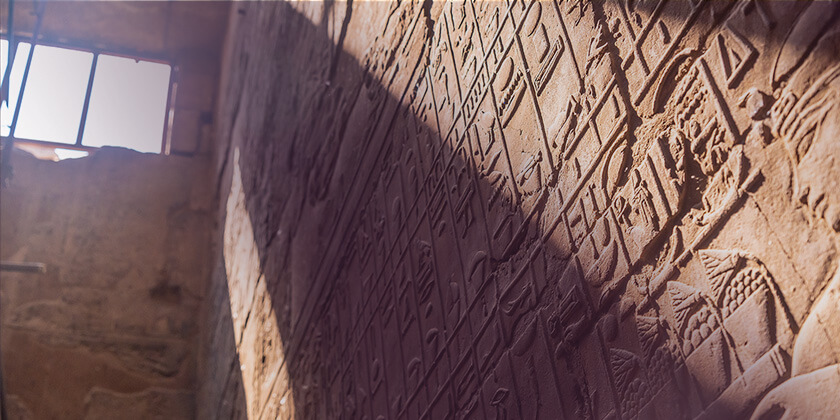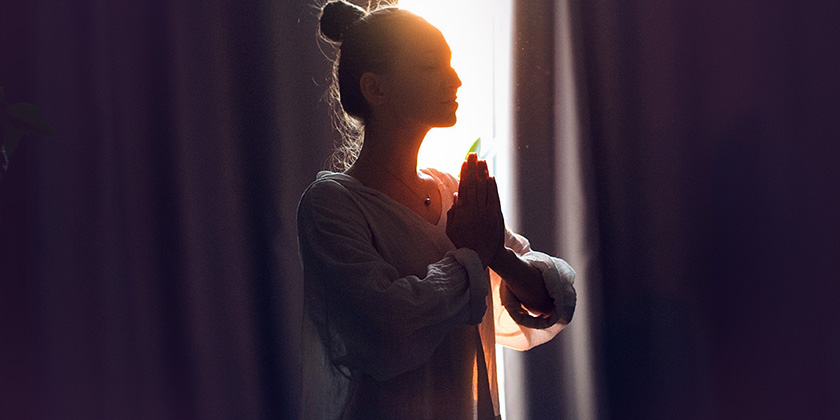What is the Astrological New Year
The entry of the Sun into Aries marks the beginning of the zodiacal journey
Published in: 22/02/2018 at 19:31
Updated in: 22/02/2018 at 12:51
light mode
8 minutes of reading
Want to know how this information can affect your life?
Unlike the traditional New Year - celebrated worldwide on January 1st - the Astrological New Year usually occurs between March 20th and 21st.
On this date, the Sun leaves Pisces, the last sign of the Zodiac, and returns to Aries, beginning a new cycle. It is time to put new plans into action and start over with enthusiasm and willingness. In this content, you will better understand what the astrological new year is and why it is the most compatible date with the reality of nature, what its origins are, and why it only begins in March. Enjoy your reading!

What is the Astrological New Year?
The Astrological New Year is the day that marks the entry of the Sun into Aries, the first sign of the Zodiac. Unlike the traditional new year, which has cultural and political roots, the Astrological New Year is defined by astronomical basis and is related to natural cycles of our planet. More specifically, with the Spring Equinox in the Northern Hemisphere (Autumn Equinox in the Southern Hemisphere).
It is when the “solar key” finally turns, opening the way for a new cycle. To help you understand better: the Zodiac functions as a calendar composed of symbols — also referred to as signs — that repeat cyclically. These signs can indicate environmental changes, adaptive responses and, in the human case, interfere with mood and physical energy. In fact, the term “Zodiac” originates from the fusion of two words: “Zoé” — signifying the environment, nature, and the natural birthplace from which we arise — and “Diakus” — denoting a wheel, circuit, cycle, repetition, and the dynamics of movement. Thus, as the Sun reaches the position of “zero degrees of Aries” within the ecliptic frame of reference, it signifies the restart of a renewed environmental cycle.

Why does the New Year only start in March?
This is a common question: why are we saying that the new year only starts in March, with the entry of the Sun into Aries, if we celebrate the arrival of the new year in January? Is our calendar wrong?
Actually, no. First, it is important to highlight that they are different things. As explained above, the Astrological New Year is related to the Spring Equinox in the Northern Hemisphere — and to the Autumn Equinox in the Southern Hemisphere — and the traditional new year is a civil cultural date.
To help you understand better, we will present some curiosities. Let's go back a little in time:
Have you noticed that some months of the year have names that resemble numbers? September, October, November, and December… that is, seven, eight, nine, ten…
But, have you noticed that in our traditional calendar, September is the 9th month and not the 7th, just as November is the 11th month and not the 9th?
Notice that the numerals, with their pronunciation in Latin, are even closer to the names of the months in English: 7 - septem (September) | 8 - octo (October) | 9 - novem (November) | 10 - decem (December).
Now, do the math. If September were the 7th month, October would be the 8th month, November the 9th month, December the 10th month, January the 11th month, February the 12th month… and March would be the first month of the new year!
Did the astrological new year date make more sense to you now?
About the traditional New Year, let's go to the explanation: traditionally, it is celebrated because our calendar is an adaptation of the ancient Egyptian calendar. It was introduced by Julius Caesar in the 46th century BC. This calendar has a strong relationship with Roman culture and that is where the name of some other months comes from, such as July — a reference to the Roman emperor Julius — and August, a reference to the Roman emperor Augustus.

What is the relationship between the Solstices and Equinoxes with the Astrological New Year?
To better understand the relationship between the Spring Equinox, Autumn Equinox, and the Astrological New Year, first, it is necessary to understand the astronomical concept of Solstices and Equinoxes and the difference between the two.
The explanation is simple and makes a lot of sense: the Equinoxes occur when the Sun is near the celestial equator line, illuminating both hemispheres of the Earth equally. They mark the arrival of Spring and Autumn.
The word Equinox is derived from the Latin aequus nox, which means equal night. Astrologically, the Spring Equinox marks the arrival of the Astrological New Year, with Aries naturally predisposing to the start of a new cycle.
Here, a quick explanation is worth it: in this text, you will notice that we talk a lot about equinoxes and solstices regarding the Northern Hemisphere, instead of highlighting what happens in the Southern Hemisphere. This is because the Northern Hemisphere is the cradle of astrology; therefore, all time counting is based on this pattern.
In the Spring Equinox, the natural environmental signs, the heat, and humidity cycle of Pisces is going away. Whatever was experienced, reflected, integrated, or left behind, gives way to new action, loaded with new possibilities and experiences.
Motivation can take over, leaving us more energized, renewed, and with more knowledge, ready to enjoy the new cycle with more disposition and a new proposal for events in life.
The Solstices happen in summer and winter when the Sun, at the furthest point from the celestial equator line, illuminates one hemisphere more than the other.

The word Solstice is derived from the Latin sol sistere, which means the stopped sun. The Winter Solstice in the Northern Hemisphere marks a period of cold and longer nights, as there is less incidence of sunlight. It is a time for retreat and introspection.
This phenomenon is an invitation to come out of our shell and seek human warmth, relate to other people to participate and belong to something. Just as some species of crab migrate at this time searching for food and shelter, perhaps we should look for our group to support us.
Solstices and Equinoxes are related to the Cardinal Signs. They mark the beginning of each season and bring characteristic signs of each time. In the USA, the Spring Equinox occurs in Aries, the Summer Solstice in Cancer, the Autumn Equinox in Libra, and the Winter Solstice in Capricorn.
Remember that this Cardinal Axis is very relevant in reading our Birth Chart. They bring themes such as action, emotion, increase in energy, balance, and ambition and can serve as guides in the most diverse areas and in the most diverse forms in our psyche and in the sectors of our lives.
Astrological New Year Celebrations in the World
The celebration of the Spring Equinox is an ancestral tradition that endures to this day in various parts of the world, and its symbolism is powerful.
In the Near East (where part of the images of the Zodiac we know came from), Noruz is celebrated on the exact day of the entry of the Sun into the Sign of Aries. It is a traditional festival that has existed for at least 3,000 years. It involves countries such as: Afghanistan, Azerbaijan, India, Iran, Iraq, Kazakhstan, Kyrgyzstan, Uzbekistan, Pakistan, Tajikistan, Turkmenistan, and Turkey.

The national day of Iran is March 21st, that is, the entry of the Sun into Aries!
From this day on, the shearing of Rams (symbol of the sign of Aries) begins. From their wool, clothes, and rugs are made, which serve to cool the heat of the deserts during the day and warm the intense cold at night.

The Noruz festival is considered an “intangible heritage of humanity” by UNESCO. A traditional and typical characteristic of this period is for people to gather with family and friends around a table decorated with objects that symbolize the beginning, the Light, and luminosity, which means life and aspects of prosperity.
People adorn themselves with new clothes and visit other people, neighbors and relatives, especially the elderly. They exchange handcrafted gifts.
In this Astrological New Year festivity, there is music and dance in the streets, as well as water and fire rituals (Pisces and Aries) that are carried out in public. Sports and leisure competitions are also held (Aries) as part of the festivities. This party, in fact, is full of astrological symbolism!
How to take advantage of the arrival of the Astrological New Year?
The new astrological year begins on March 20th. The period in which the Sun travels its journey through Aries is marked by a force of impulse and renewal. It is often ideal for the start of new projects and for setting goals and objectives and starting to put them into practice.
The Astrological New Year brings the renewing possibility, which drives us to start a new cycle in our lives, taking advantage of the strength of the fire element. It is a favorable period for detachments and new ways of acting, in which we must visualize everything we want to be reborn or flourish in our lives.
It is very valid to take advantage of this moment to take care of our mind and body, seeking balance and emotional maturity, while pursuing our goals for the next period. Relationships, work, health, or any other desire deserve our attention.

Every year, during this period, invite those you enjoy being with and have a focused gathering. It's a perfect moment for everyone to exchange ideas and get to know each other better. How was the past cycle? What new goals shall we set? It's also a good time to make peace or to finally end ties that don't add anything to your life.
The New Year on January 1st has the same symbolism, but it is merely a cultural aspect of the Western calendar, one of whose purposes was to unify tax collection in the Roman Empire. Therefore, it is a civil, administrative, and political calendar.
Keep in mind that all the feelings we have about the traditional new year also apply to the astrological new year, but even more so. The impulsiveness of Aries, especially in charts more focused on the elements of fire and air, can give even more intensity to the perception of the surrounding things.
Rituals are also an excellent way to take advantage of the arrival of the Astrological New Year. If you are keen to learn about some, take a look at our article on New Year's rituals!
